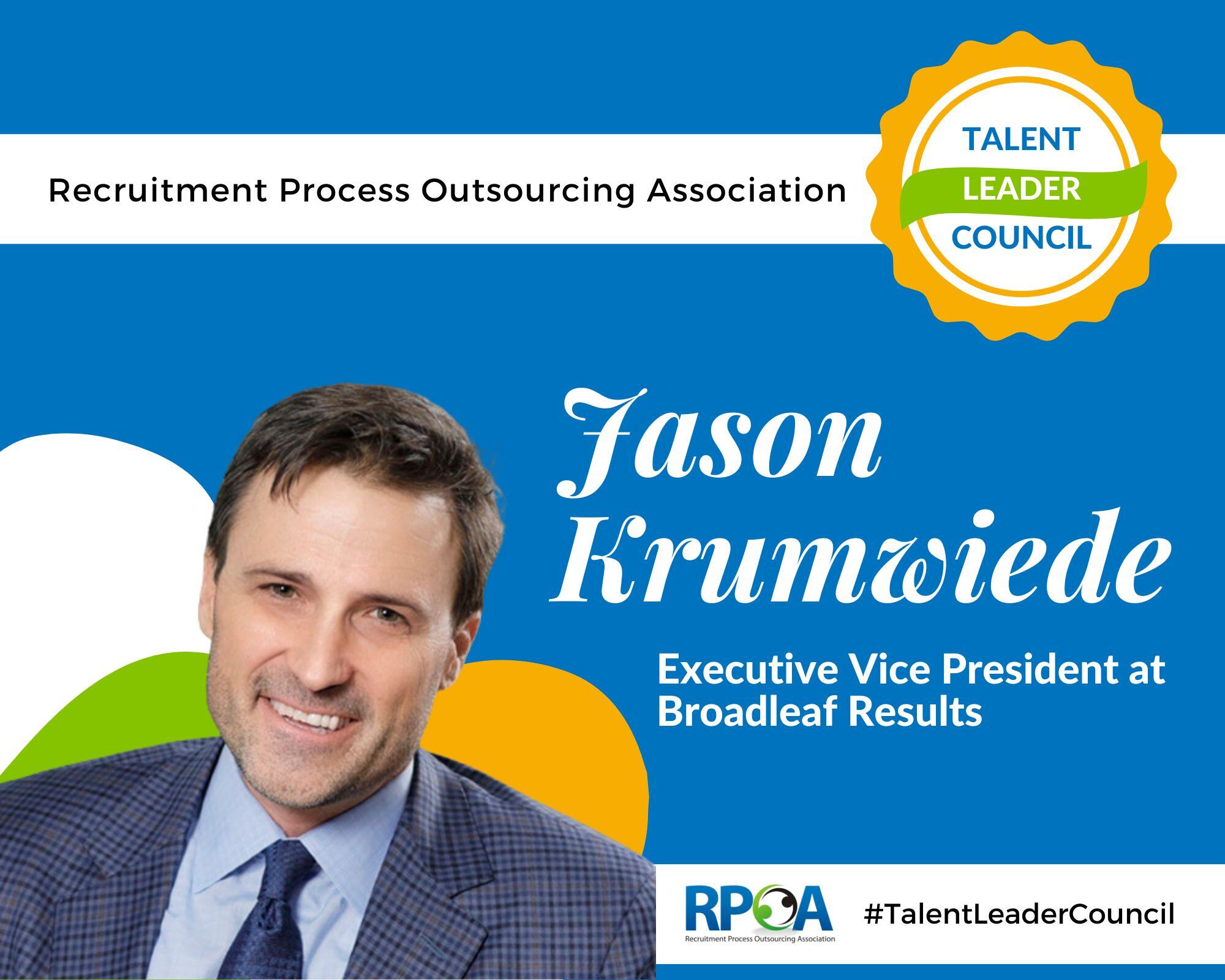As we wrapped up our 2nd annual RPOA conference in October, we are continuing the conversation with RPO leaders to hear about the current challenges and outlook of talent. In this episode of the series, the RPOA caught up with Tina Tromiczak, Senior Vice President, ADP Recruitment Process Outsourcing. The following is an edited version of this interview.
RPOA: If you don't mind, set the stage for us. Let's talk about the current state of the talent market from your perspective.
I’m going to approach the answer in three sections: what's happened, what we're doing about it, and what we can add or help with as an RPO industry.
The market trends we’re seeing today are a result of changes that started in 1970. At that time, the fertility rate in the U.S. began to drop, reaching a low of around 1.5 children per woman today. What that means is the relative size of the working population in the US has been shrinking since 2008. So that's one factor, and then you add to it the pandemic.
What we’re seeing is that baby boomers left the workforce during this time at an accelerated rate. Ordinarily, in a year, we'll see about 2 million baby boomers retire. In 2020, we saw 3 million, and that number is increasing. During the pandemic, women and minorities also left the workforce in much higher numbers than is typical because of family reasons, whether that was caring for someone or other family obligations.
We saw these groups (baby boomers, women, and minorities) leave the workforce, and they've not come back in that same rates as other groups. The attrition rate in the workforce is accelerating. We’re seeing people leaving their current positions—without having a new position—at an even higher rate than ever before. Reports show about 36 percent of those who are leaving positions don't have a new job lined up. That’s a very interesting change from what we've seen in recent history.
Data shows that in February 2021, around 52 percent of folks in the workforce were looking for new jobs, up from 35 percent in February 2020. People want better compensation and better benefits. During the pandemic, we saw 25 percent of the workforce saying, “I need a better work-life balance.”
In the recruiting business, we saw an additional challenge, and that is that demand for recruiters is skyrocketing. The competition for recruiters is not only within our industry but in every business. During the pandemic, in many cases, folks laid off their talent acquisition teams or laid off parts of those teams. As the economy is coming back so quickly, many businesses can’t handle the demand.
Then, what do we do about that? What we recommend is working on three areas of talent acquisition: maximizing the talent pipeline; eliminating barriers; and attracting talent.
One of the shifts we’ve seen during this pandemic is virtual work. As we move past the pandemic, people want flexibility in their work environment. They want the ability to work remotely. Therefore, requiring people to work from offices becomes a barrier to attracting talent. To overcome this barrier, companies can offer work flexibility when possible, and make sure to put that on all your ads. This also applies to flexible work hours.
Candidate assessment is another barrier worth reviewing. When doing an investigation for one of our clients, we found that only 96 percent of applicants were passing the assessment. The fallout rate after the initial interview was 50 percent. Because the assessment is the next step right after the initial interview, we found only 4% percent of these applicants making the interview are eliminated. The recommendation, in this case, is to eliminate the assessment altogether or move it further into the recruitment process.
For quite some time, the skills requirement for positions has been a big barrier in the talent market, especially given the skills shortage. You can eliminate this barrier by including training as part of the job offer. In some cases, candidates might need upskill training in just one or two areas.
Cutting down on the application eliminates another barrier. Today, folks have many job opportunities. If your application process takes too long, they’re just going to say, “I’m not going to do it.” They already have other opportunities and they're not going to take the time with a longer application.
Then, the final one is fewer interviews. We've all seen applicants who went through an initial interview, then met with HR and the hiring manager, and then maybe a group interview. And really, what are the needs here? And what are we solving for? So, can we eliminate some of those interviews or consolidate some together? Because who gets out there first with the offer is generally going to get the candidate.
Especially since Covid-19, essential workers, in particular, want to know they will be safe. It's very important that your branding is telling who you are, and why your business is the very best place workers want to come every day. We work with a lot of clients on their messaging around workplace safety and company culture.
Interestingly enough, one of the questions that we've seen from a lot of applicants is, “Is there an opportunity for pet care?” Many folks adopted pets during the pandemic and need pet care. Other benefits that offer competitive advantage are competitive pay, career growth, family support, and business culture.
I talked about attracting talent. But talent strategy is so much more than that. It's about growth. It's about developing employees, fostering engagement, etc. How do we keep people? How do we retain those folks? We’re encouraging things like stay bonuses and stay interviews.
Can you talk about the role of technology in today’s talent acquisition?
ADP Marketplace is a digital storefront of HR solutions that integrate with ADP products. Easily connect and share data between your HR systems, from financial wellness to video recruiting. With AI- and machine learning-powered search and app recommendations, clients can easily find the solutions most relevant to their unique needs.
We have access to a lot of big data at ADP as we pay one in six American workers. We have aggregated and anonymized data on over 30 million associates across the world—big data such as wages, overtime, location, ages, and more. This allows ADP RPO to use that proprietary data for location strategies for our clients. Say, for example, you're wanting to look at a new service site and want to know whether people are moving into or out of that region. We can help with that. When our clients are looking at that and saying, “We're not getting a funnel of candidates,” we're can give them the data on wages. What is the advertised wage? What is their actual wage? What is the unemployment wage? And what is the average wage in a community or in a specific radius?
With our technology including tools such as pay equity, diversity dashboard, and a turnover projector, we can help predict people moving or leaving an area. That kind of data is a tremendous weapon in a war for talent. It's an exciting time for us to get to work with our clients.
What is the message you’d like to communicate to the business and TA world as an RPO provider?
This is a great time to take advantage of having outsourced recruiting. We have the flexibility. We can scale by growing or shrinking our teams. We can get targeted recruiters and targeted industries, and we can use our relationships through the marketplace to help with specific areas. It's just a great opportunity for clients to get up quickly and fast and move across locations. So, the opportunity to use an RPO is great. Now is the best time to work with an RPO.














